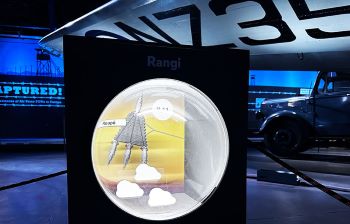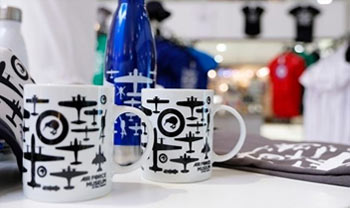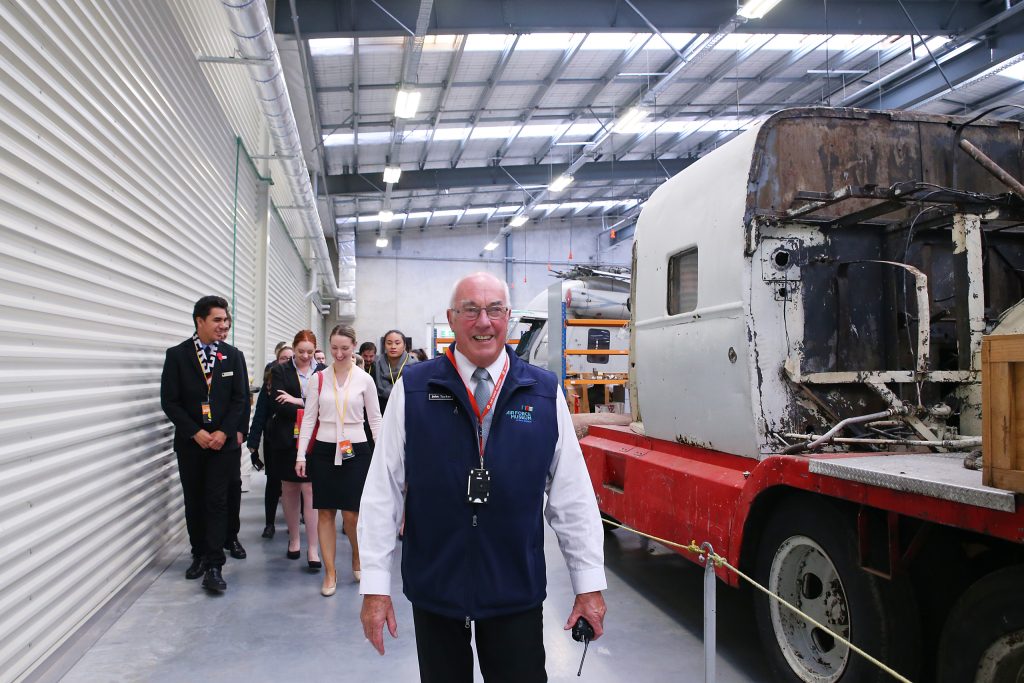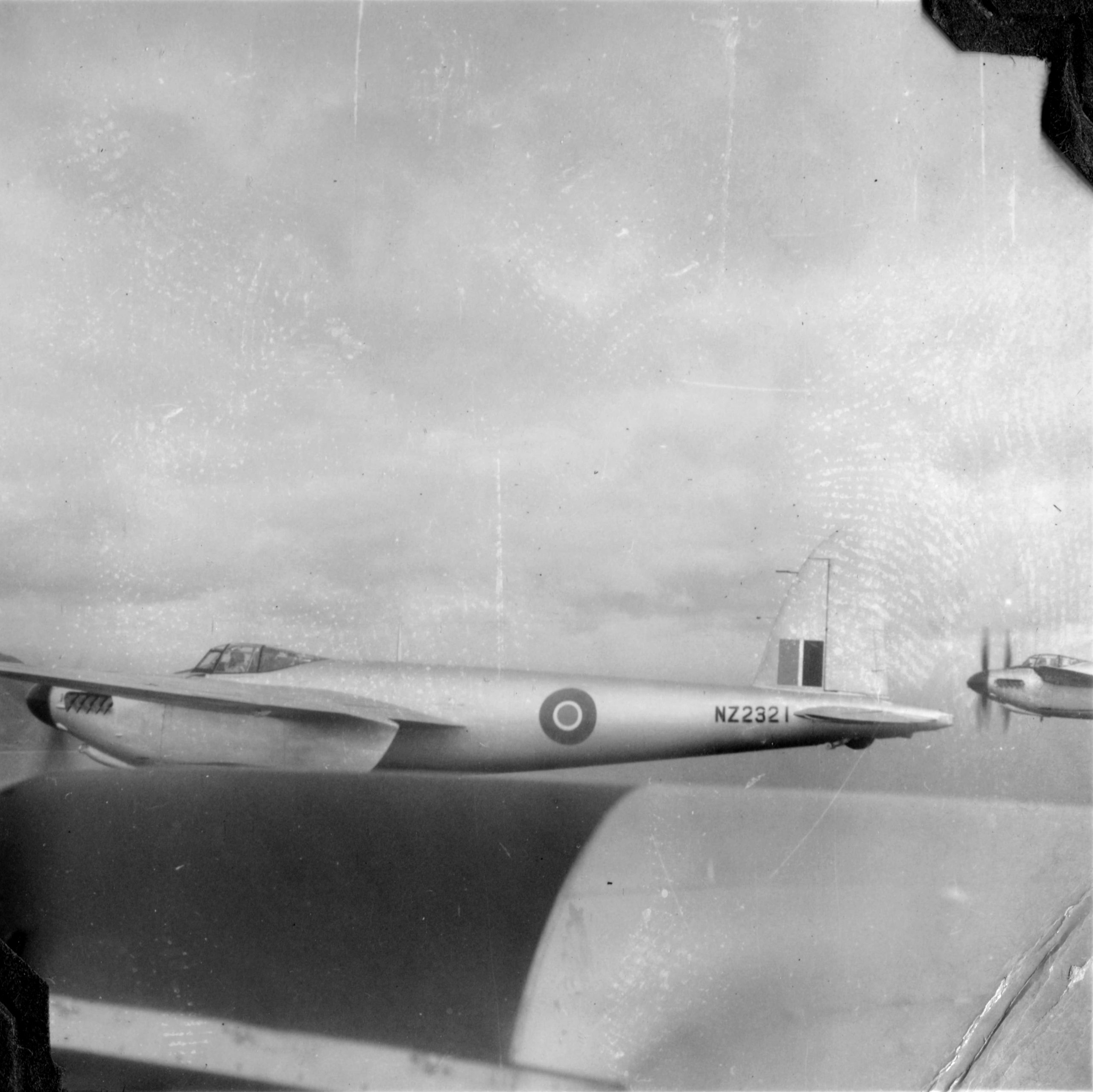The RNZAF has been called on to help with all sorts of missions over the years, some more interesting than others. It is safe to assume it was an exciting prospect for the pilots of No. 75 Squadron in January 1952 when the Air Department sent a sortie order with a clear goal – sink the Arahura!
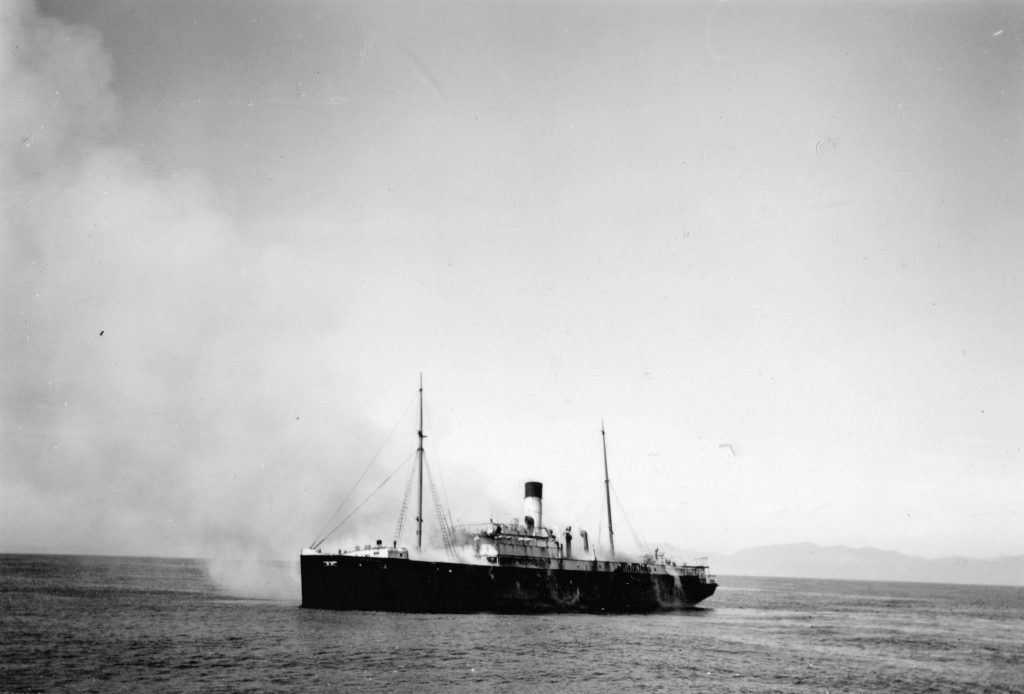
Built in Scotland in 1905, the 1597-ton twin screw steamer TSS Arahura was used as a passenger ferry on a number of routes over the years, most notably between Nelson and Wellington which she plied for 30 years.
In 1950 she was retired and a plan was developed to scuttle her in the waters off Baring Head in Cook Strait. Someone decided it would make a brilliant training exercise for No. 75 Squadron’s de Havilland Mosquitoes and their crews, and they were right.
In the No. 75 Unit History Flying Officer AG Shearer does an excellent job of describing the events from start to finish.
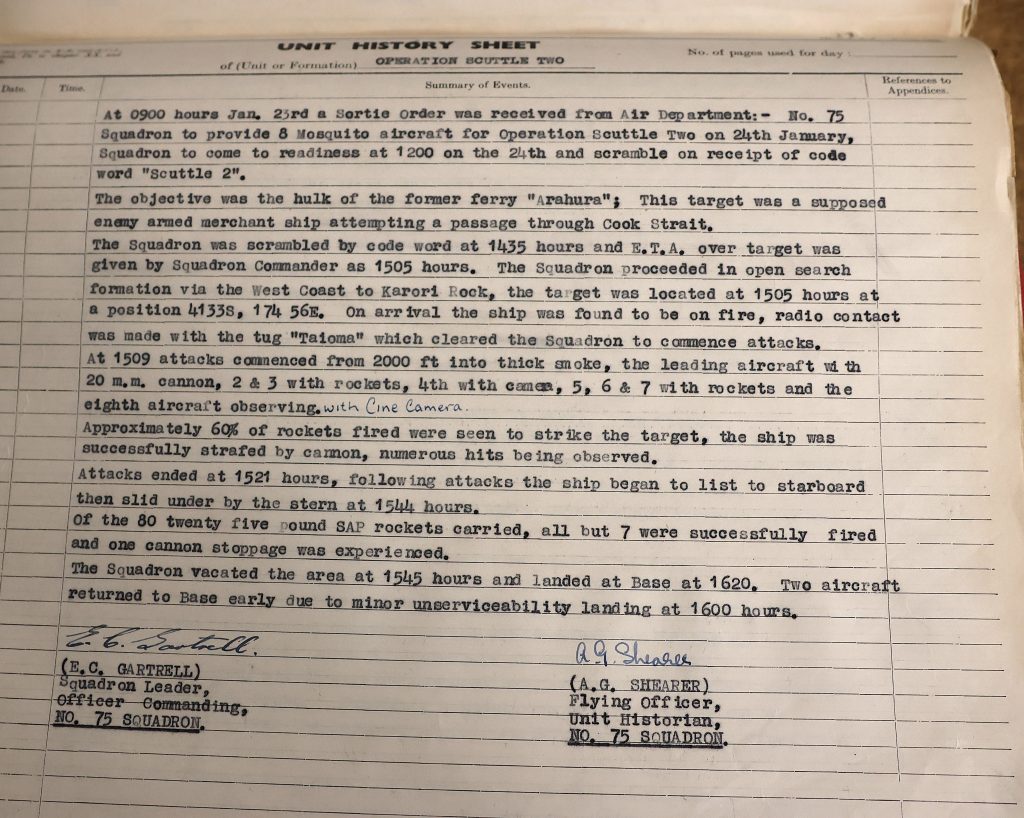
The action begins on 23 January at 0900, when the sortie order is received for No. 75 Squadron to come to readiness with eight de Havilland Mosquito aircraft ready to scramble for a mission after 1200 hours the following day.
The big day arrives on Thursday 24 January, and the weather is favourable.
Operation Scuttle 2 is on. An ‘enemy’ merchant ship has been detected in Cook Strait and the job is to intercept and destroy it.
The code word is passed on, and eight de Havilland Mosquitos, armed with rockets and cannon rounds, scramble at 1435 hours.
The squadron forms up and proceeds in an open search formation towards Karori Rock and the Squadron Commander gives an estimated time of arrival over Cook Strait as 1505 hours – or half an hour to cover the 150km to the target.
The target was located at 1505 at 4133S, 174 56E and is on fire. At 1509 the Mosquitoes dived in from 2000 feet to start their attacks on the ship.
The unit history records how the leading aircraft opened up with cannon fire, while five aircraft followed with rocket attacks. Two of the Mosquitoes in the formation were observers, one with a camera and another with a cine camera, record the attacks. The fourth and eighth aircraft in the formation were on photographic duty.
The attacks lasted 12 minutes, and clearly did the job.
“Attacks ended at 1521 hours, following attacks the ship began to list to starboard then slid under by the stern at 1544 hours.’’
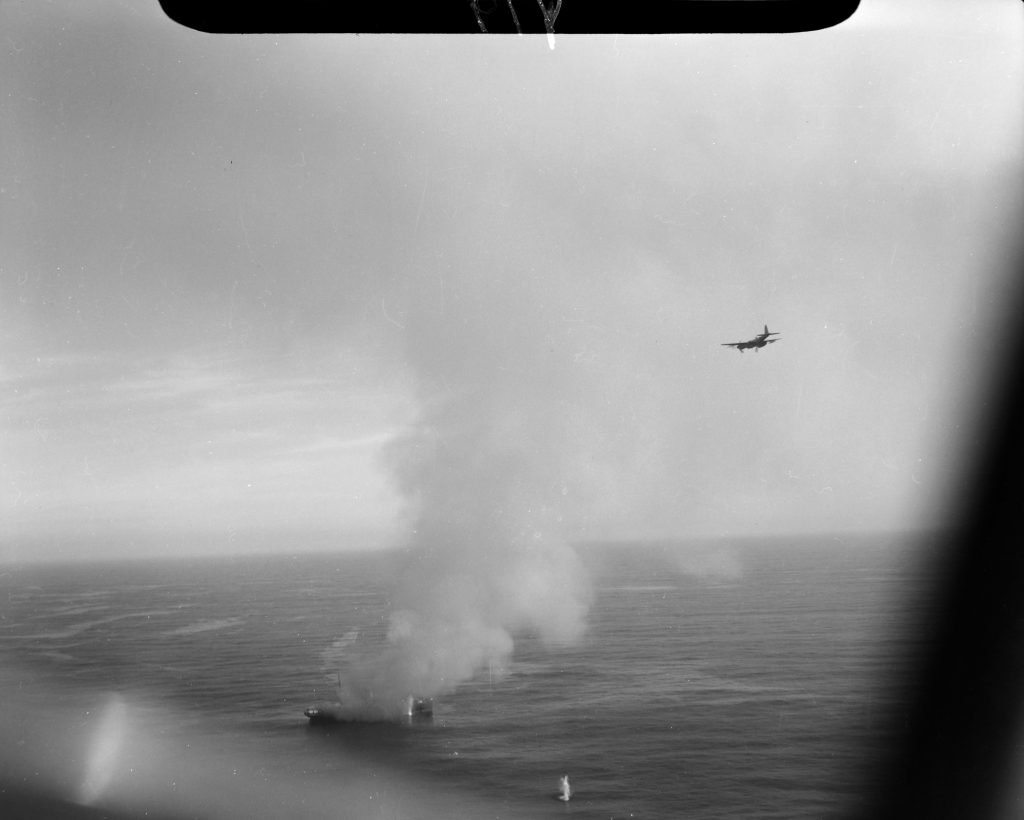
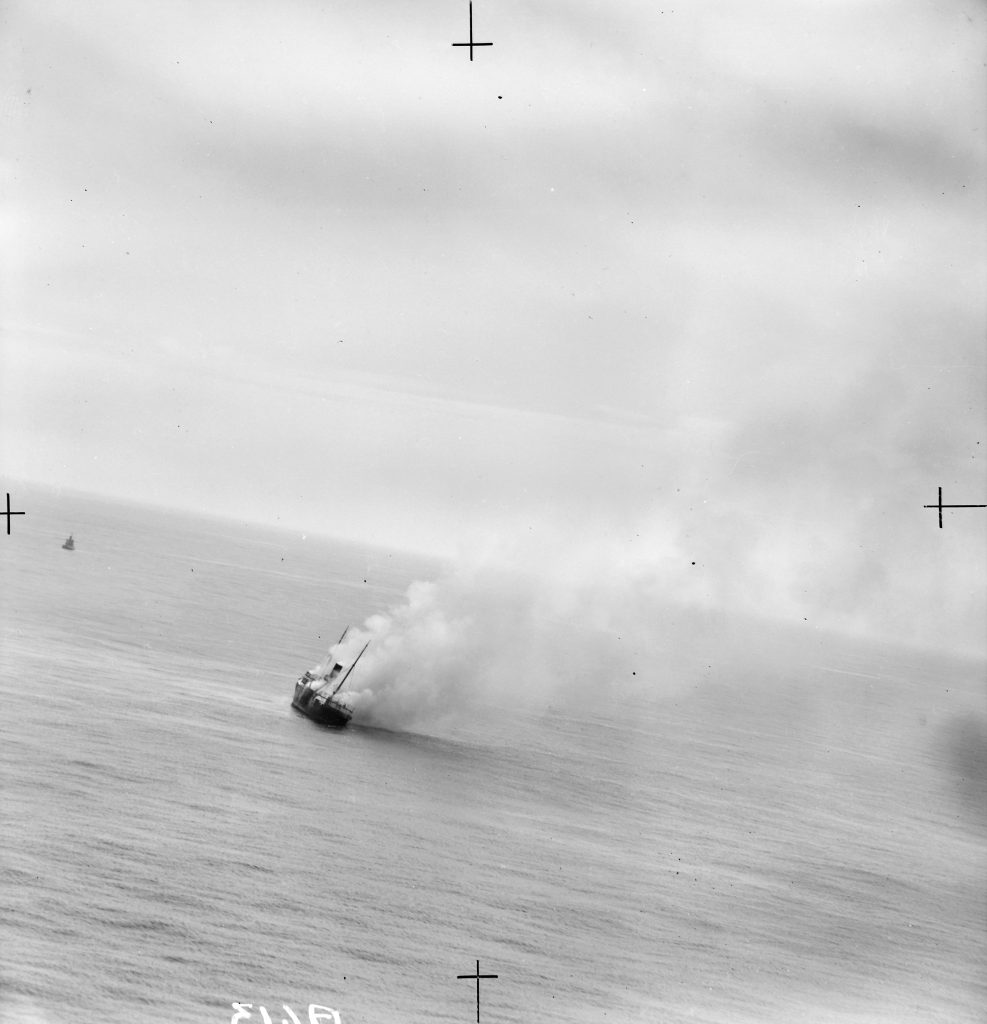
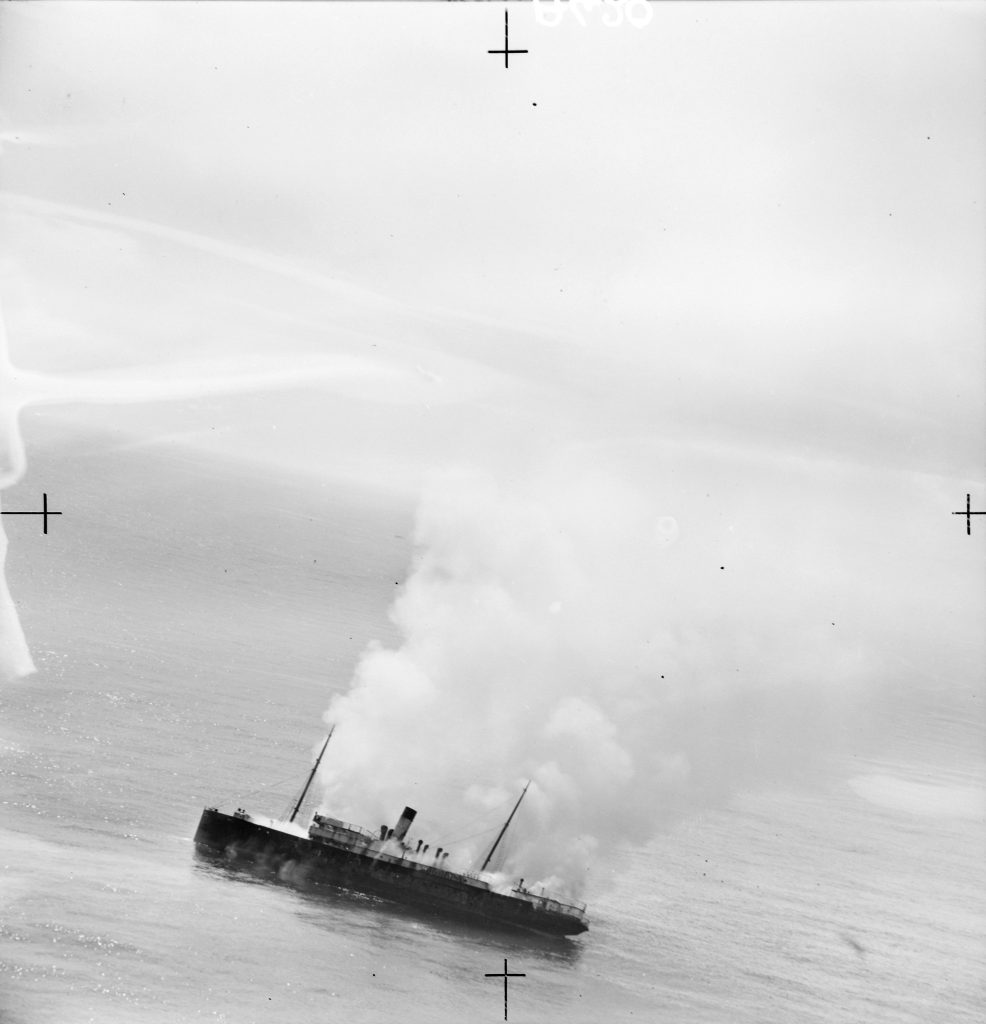
Of the 80 24lb rockets carried, all but seven were successfully fired and one cannon stoppage was experienced. “The Squadron vacated the area at 1545 hours and landed at base at 1620.’’
And so ended the operation for No. 75 Squadron.
The RNZAF enjoyed positive media coverage of the mission, with The Press headline screaming ‘Planes sink Arahura’.
The New Zealand Press Association (NZPA) reporter describes how ‘a few pieces of charred wood swirling in the water were the only traces of the former Wellington-Nelson ferry steamer Arahura, after Air Force Mosquitoes sunk her in Cook Strait this afternoon.’
The NZPA reporter fills in some of the gaps from the unit history and adds some colourful flourishes about the ship’s last moments: ‘…ripped open by rockets… she slid down stern first, in a sizzle of steam at 3.45pm.’
The crew of the Taioma had towed the Arahura out and set her adrift 24 kilometres off Baring Head in waters more than 182 metres deep. Three crew members deliberately set the Arahura on fire before being taken off by the Taioma. Presumably this was to imitate the enemy vessel charging at full steam through the strait and possible anti-aircraft fire to make the exercise more realistic.
Squadron Leader EC Gartrell was in radio communications with the tug, and he was told the Arahura was an armed merchant cruiser and to expect anti-aircraft fire. The reporter describes how the Mosquitoes made short work of the job.
“…with no cargo to impede them, the rockets frequently cut through the hull. At one stage, it was thought the Arahura’s list was so great that she would roll over. However, at the last moment, with her upper works blazing furiously, she settled down on her stern, and slid from sight.”
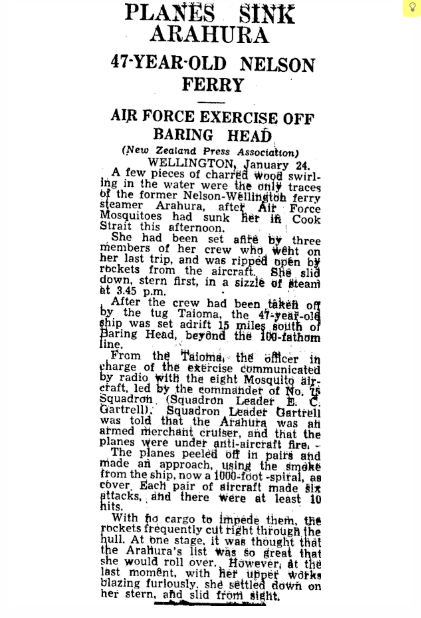
The sequence of pictures from the sinking is in our collection and are an excellent record of the Arahura’s final moments.
You can search our collection here.
